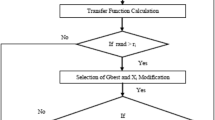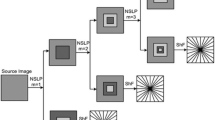Abstract
Breast cancer is nowadays becoming a serious problem and acts as a main reason for death of women around the world. Hence various devices are being utilized for the detection of breast cancer at an earlier stage and diagnosing it in an earlier stage might even results in complete cure of the disease. Among the wide range of devices available, mammogram is one of the commonly employed and most effective approaches involved in the detection of breast cancer. It records the affected area in the form of mammogram images and these images are processed through image processing techniques for the detection of cancer affected regions. In this paper, novelties have given in all the image processing aspects such as filtering, segmentation, feature extraction and classification. The salt and pepper noises in the mammogram images are eliminated by the usage of novel decision based partial median filter. Then the filtered images are segmented based utilizing a novel technique which is formed on integrating the deep learning techniques of VGG-16 and series network. Features of the segmented images have extracted through BAT-SURF feature extraction, where the orientation of the interest points are extracted using Bat optimization algorithm along with SURF (i.e.) Speeded up Robust Features. It extract most important key points from SURF features and then the extracted image has classified by using the novel Gradient descent decision tree classifier in which a stable learning path provided for easy convergence. Then the performance of the proposed system has analyzed based on the performance metrics like accuracy, specificity, sensitivity, recall, precision, Jaccard coefficient, F score and missed classification. Based on the results obtained, the conclusion of the proposed work has attained enhanced results on comparing with other state of the art approaches. The accuracy value of the proposed hybrid VGG-16 and series network segmentation technique determined as 96.45 and similarly the accuracy value of the proposed Gradient Descent Decision Tree Classification technique has value shows 95.15.















Similar content being viewed by others
References
Abdel-Zaher AM, Eldeib AM (2016) Breast cancer classification using deep belief networks. Expert Syst Appl 46:139–144
Albarqouni S, Baur C, Achilles F, Belagiannis V, Demirci S, Navab N (2016) Aggnet: deep learning from crowds for mitosis detection in breast cancer histology images. IEEE Trans Med Imaging 35(5):1313–1321
Ali Y, Hamed S (2015) Early breast cancer detection using mammogram images: a review of image processing techniques. Biosci Biotech Res Asia 12:225–234
Becker AS, Marcon M, Ghafoor S, Wurnig MC, Frauenfelder T, Boss A (2017) Deep learning in mammography: diagnostic accuracy of a multipurpose image analysis software in the detection of breast cancer. Investig Radiol 52(7):434–440
Chougrad H, Zouaki H, Alheyane O (2018) Deep convolutional neural networks for breast cancer screening. Comput Methods Prog Biomed 157:19–30
Danaee P, Ghaeini R, and Hendrix DA (2017) “A deep learning approach for cancer detection and relevant gene identification,” in PACIFIC SYMPOSIUM ON BIOCOMPUTING 2017: World Scientific, pp. 219–229
Ghosh S, Das N, Das I, Maulik U (2019) Understanding deep learning techniques for image segmentation. ACM Comput Surv (CSUR) 52(4):1–35
Hesamian MH, Jia W, He X, Kennedy P (2019) Deep learning techniques for medical image segmentation: achievements and challenges. J Digit Imaging 32(4):582–596
Ho DJ et al (2019) “Deep Multi-Magnification Networks for Multi-Class Breast Cancer Image Segmentation,” arXiv preprint arXiv:1910.13042
Houssami N, Bernardi D, Pellegrini M, Valentini M, Fantò C, Ostillio L, Tuttobene P, Luparia A, Macaskill P (2017) Breast cancer detection using single-reading of breast tomosynthesis (3D-mammography) compared to double-reading of 2D-mammography: evidence from a population-based trial. Cancer Epidemiol 47:94–99
Jang H-J, Cho K-O (2019) Applications of deep learning for the analysis of medical data. Arch Pharm Res:1–13
Jiménez G, Racoceanu D (2019) Deep learning for semantic segmentation versus classification in computational pathology: application to mitosis analysis in breast Cancer grading. Front Bioeng Biotechnol 7:145
Kaur P, Singh G, and Kaur P (2019) “Intellectual detection and validation of automated mammogram breast cancer images by multi-class SVM using deep learning classification,” Informatics in Medicine Unlocked, p. 100151
Li S, Dong M, Du G, Mu X (2019) Attention dense-U-net for automatic breast mass segmentation in digital mammogram. IEEE Access 7:59037–59047
Punitha S, Amuthan A, Joseph KS (2018) Benign and malignant breast cancer segmentation using optimized region growing technique. Future Comput Inform J 3(2):348–358
Raghavendra U, Acharya UR, Fujita H, Gudigar A, Tan JH, Chokkadi S (2016) Application of Gabor wavelet and locality sensitive discriminant analysis for automated identification of breast cancer using digitized mammogram images. Appl Soft Comput 46:151–161
Rastghalam R, Pourghassem H (2016) Breast cancer detection using MRF-based probable texture feature and decision-level fusion-based classification using HMM on thermography images. Pattern Recogn 51:176–186
Saba T, Khan SU, Islam N, Abbas N, Rehman A, Javaid N, Anjum A (2019) Cloud-based decision support system for the detection and classification of malignant cells in breast cancer using breast cytology images. Microsc Res Tech 82(6):775–785
Sahni P, Mittal N (2019) Breast Cancer Detection Using Image Processing Techniques. In: Advances in Interdisciplinary Engineering. Springer, pp 813–823
Saknure S and Deshpande D (2020) “Multi-scale segmentation for detecting mass in mammograms using deep learning techniques,” Available at SSRN 3566248
Selvathi D and Poornila AA (2018) “Deep learning techniques for breast cancer detection using medical image analysis,” in Biologically Rationalized Computing Techniques For Image Processing Applications: Springer, pp. 159–186
Shayma’a AH, Sayed MS, Abdalla MI, Rashwan MA (2019) Detection of breast cancer mass using MSER detector and features matching. Multimed Tools Appl:1–24
Shi P, Zhong J, Rampun A, Wang H (2018) A hierarchical pipeline for breast boundary segmentation and calcification detection in mammograms. Comput Biol Med 96:178–188
Singh AK, Gupta B (2015) A novel approach for breast cancer detection and segmentation in a mammogram. Proc Comput Sci 54:676–682
Singh VK, Rashwan HA, Romani S, Akram F, Pandey N, Sarker MMK, Saleh A, Arenas M, Arquez M, Puig D, Torrents-Barrena J (2020) Breast tumor segmentation and shape classification in mammograms using generative adversarial and convolutional neural network. Expert Syst Appl 139:112855
Urooj S, Singh SP, Ansari A (2018) Computer-Aided Detection of Breast Cancer Using Pseudo Zernike Moment as Texture Descriptors. In: Sensors and Image Processing. Springer, pp 85–92
Wang S, Rao RV, Chen P, Zhang Y, Liu A, Wei L (2017) Abnormal breast detection in mammogram images by feed-forward neural network trained by Jaya algorithm. Fundam Informaticae 151(1–4):191–211
Wang Z et al (2019) “Breast Cancer detection using extreme learning machine based on feature fusion with CNN deep features,” IEEE Access
Author information
Authors and Affiliations
Corresponding author
Additional information
Publisher’s note
Springer Nature remains neutral with regard to jurisdictional claims in published maps and institutional affiliations.
Rights and permissions
About this article
Cite this article
Jahangeer, G.S.B., Rajkumar, T.D. Early detection of breast cancer using hybrid of series network and VGG-16. Multimed Tools Appl 80, 7853–7886 (2021). https://doi.org/10.1007/s11042-020-09914-2
Received:
Revised:
Accepted:
Published:
Issue Date:
DOI: https://doi.org/10.1007/s11042-020-09914-2




